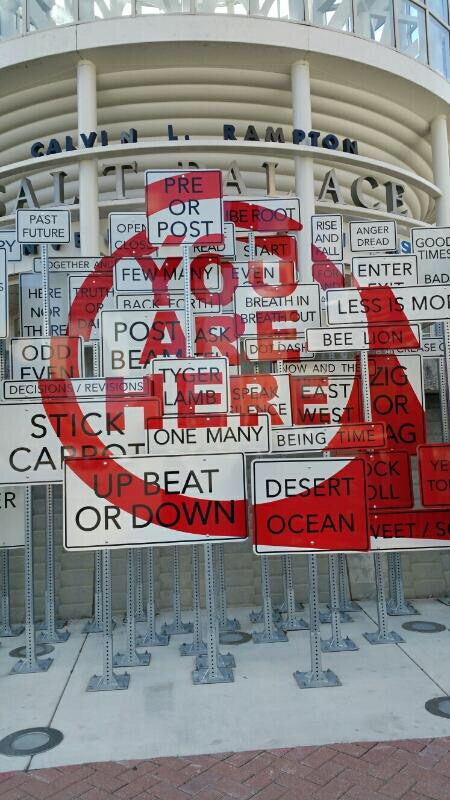This week, I am joined by someone who actually knows what she is talking about: Kristin Laursen, our Director of Marketing and Business Development. The two of us attended the Association of Energy Services Professionals (AESP) Spring Conference in Salt Lake City last week. The theme of the conference was marketing and customer engagement.
Marketing and customer engagement is moving at Mach speed. Campaigns and outreach that may have gotten program managers over the finish line in time[1] five years ago, three years ago, or even last year, are likely on the verge of obsolescence.
My simpleton assessment is that modern engagement must include mass digital engagement with marketing automation and timely follow up by humans. Engagement requires responding to customer interest in near real time. Does the marketing system or process deliver this? Does it have a “smart grid” two-way engagement, or does it just puke information in one direction, relying on customers to go through the hassle of clawing their way through the labyrinth of inbound marketing on their own?
Let me give you an example of bad customer engagement. Maybe USAA, my insurance carrier, will pick this up. I was recently in the market for life insurance to cover my share of our company ownership. USAA has outstanding customer service, but when I emailed them to ask whether Michaels could own a policy on me, and USAA responded with a phone number to call, the game was over. I do not have time for that crap. THAT is customer disengagement. If that is what your customers are getting, you are LOSING them.

Companies like Amazon are setting the pace. You may be thinking, we’re not Amazon. We’re not selling stuff. See above. If I went through that for a utility program, game over man.
Kristin, rock our readers!
Disengagement
Thanks, Jeff. The situation Jeff alluded to above, the one he so fondly referred to as “customer disengagement”, is an example of what happens when customers are not met where they are. Now, more than ever, consumers want access to retail, banking, insurance, utilities, and pretty much everything in between, when and how it is most convenient for them. If customers want text notifications of their upcoming dental appointment or a current power outage, it’s our responsibility as service providers to engage via that method. If we don’t, we’re not listening, and we’re driving the customer to explore other choices.
Customer Experience
Customer experience matters. As the opening keynote speaker at last week’s AESP Conference, Scott Stratten, President of UnMarketing, noted, “There is no such thing as a neutral interaction with a brand. The interaction either elevates the brand, or detracts from it.” It seems like a simple concept, but it requires knowing, and paying attention to customers’ needs and preferences. It means communicating via their preferred methods and responding with immediacy, especially when things are less than perfect. It’s about going above and beyond to serve that customer – creating a story by delivering an exceptional experience.
Marketers must employ this same approach. As Ashley Nicholls from KSV reminded us in her presentation about World Class Brands, “Marketing is the promise maker and everyone interacting with customers are the promise keepers.” There cannot be a disconnect between what we’re promising and what we’re delivering, so every touch must contribute positively to the experience.
To accomplish this, we need to look beyond the traditional approaches to reaching customers. We need to supplement and strengthen these approaches by utilizing the troves of data at our fingertips. Marketing must be omnichannel, device-agnostic, personalized, and relevant.
Customers want to receive the messages we’re delivering quickly (50% will spend 2 seconds or less with content), visually (visuals are processed 60,000 times faster than text), and through their preferred methods of communication (text messages have a 98% average open rate while email has only 20%[2]). But sometimes knowing when and how to find and reach customers is a bit more challenging. This is where data comes in handy. Data teaches us buying patterns. It helps us geo-target. It tells us that Jeff Ihnen reads Wall Street Journal online daily, regularly shops on Amazon and LL Bean, prefers Starbucks coffee over Caribou, and is particularly interested in articles regarding the third law of thermodynamics.
Using what we know from the data we (or numerous other sources) have collected, we can develop strategies for our paid search advertising that go beyond optimizing key words for what we think customers will search for, and shift it toward what we know they will search for. We can do native advertising in their favorite online publications and actually be the content instead of the clutter around the content. We can better focus our social media strategies, connect our expertise to their KPIs, and deliver a truly personalized experience…that reaches customers right where they want to be.
This barely scratches the surface of the direction marketing and customer engagement is headed. But I can tell you many fabulous speakers at least week’s conference dove into these very subjects (and will continue to do so through AESP-delivered content). See Jeff’s heading below. 😉
You Need AESP
I’m back.
As I tell our staff, I cannot sell to customers services or recommendations in which I don’t believe to my core. Yes, that was a double negative. Let me repeat, I can only sell what I believe in, firmly. This is a no-hype zone.
AESP is the only organization, serving the utility energy efficiency industry, where you can get this critical information and stand a chance of staying relevant to customers. I am very fortunate to serve on the board of directors with 20-some geniuses who lead change in their organizations and keep AESP on top of the game. No bull. AESP.org
[1] End of the program year.
[2] Mobile Marketing Watch